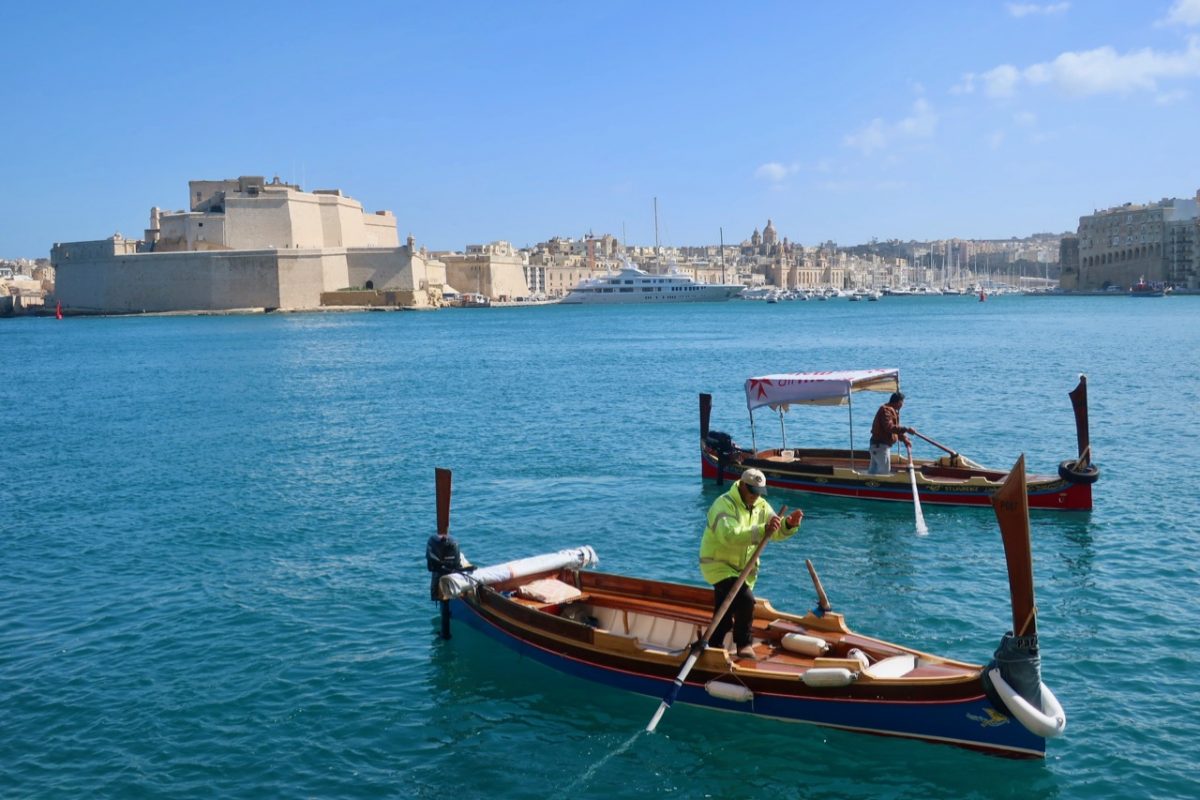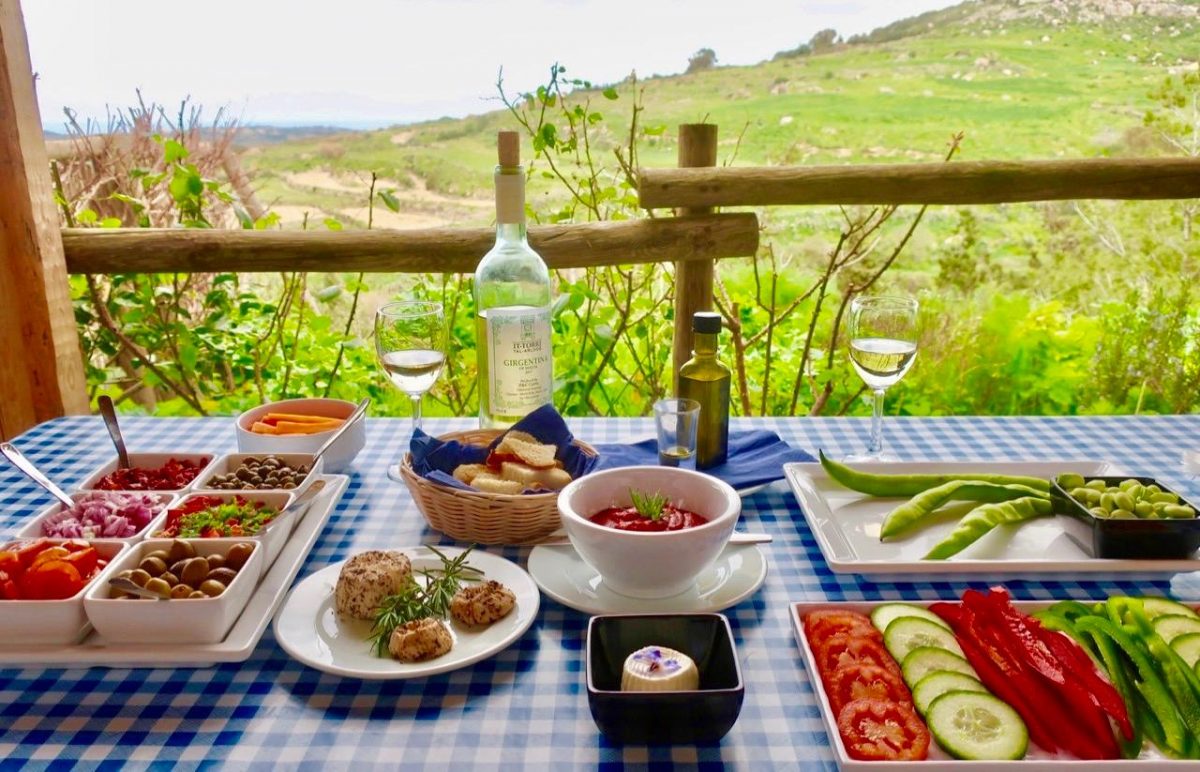Cuisine Noir Magazine. June 2019.
If you have watched Gladiator, Game of Thrones or Troy, you will recognize the towering fortresses, medieval cities, rustic villages and rocky formations that make up the dramatic backdrops. A popular filming destination, Malta is an island country located in the Mediterranean between Europe and North Africa. Fishing boats on turquoise-blue waters, dry countryside landscapes, ornate palazzos, colorful balconies and Maltese Baroque architecture feel like a mix of Italy and Morocco.

Being at the crossroads of ancient trading routes, Malta has a rich history influenced by the Greeks, Romans, Normans, French, British, Arabs and Phoenicians.
Although Malta is a popular port of call for cruisers and day trippers from southern Italy, it is best to spend a few days soaking in the scenic rolling hills, isolated beaches, ancient towns and friendly locals.
Getting There
The easiest way to get to Malta is via Europe. Connect through Rome with a low-cost flight directly to Malta. Alternatively, combine a visit with Sicily, the Italian island known for its delicious cuisine, picturesque countryside and an active volcano. A ferry from Pozzallo arrives in Malta in less than 2 hours.
The people are friendly and everyone speaks English very well with Maltese (which sounds like Arabic) and Italian spoken widely on the island.
Getting Around
Although Malta has several islands, only three of them are inhabited. The airport is located on the main island, Malta, which is the point of arrival for most travelers. There are many resorts and boutique hotels on the island of Gozo, but Comino is mostly a nature reserve.
The easiest way to see the small country is by renting a car and driving. Be careful of narrow streets and traffic jams in the city centers. Public buses are budget-friendly and well networked.
Lodging
The luxurious 5-star Phoenicia Hotel has guestrooms commanding glorious views of the Grand Harbor, cathedral and city. Maltese tiled floors, crystal chandeliers and lush gardens make this an ideal place to get a glimpse of the royalty that made Malta home. The Phoenicia has hosted a number of distinguished guests, including Queen Elizabeth II, Prince Philip, Jeffrey Hunter, Gérard Depardieu, Joaquin Phoenix and Arnold Schwarzenegger.
To be in the midst of activities, stay at Domus Zamittello, a restored 17th-century palazzo, located at the beginning of the bustling Republic Street inside the cultural capital city of Valletta. Grab a drink at the rooftop balcony overlooking an outdoor theater and watch the vibrant streets from the 16thcentury.
Dining
There is a wide range of culinary options in Malta, from family-run bakeries and food markets to upscale restaurants, and they are a lot less expensive than mainland Europe. Maltese cuisine, like it’s culture, draws on influences from the Mediterranean. Must-try dishes include Gozitan cheeselet, pastizzi, ftira sandwiches, stewed rabbit, and prinjolata. Meals are complemented by locally made wine, cheese, bread and olives.

Things To Do
With hiking spots, beaches, museums, cathedrals, cafes and festivals, Malta offers something for every kind of traveler. Must-see attractions include the UNESCO World Heritage sites —Hypogeum and the megalithic temples — that are some of the oldest in the world.
The ancient capital of Mdina, with its sandstone and marble buildings, is a delight for admirers of Arabic architecture.
One can easily spend an entire day in the current capital of Valletta, a World Heritage Site, soaking in the scenery from the Upper Barrakka Gardens, admiring the works of local artists at National Museum of Fine Arts, or simply strolling through the narrow streets filled with cafes and shops.
St John’s Co-Cathedral, built by the Order of St. John in the 16th century, is one of the finest examples of high Baroque architecture in the world, also located in Valletta.
A cruise to the Blue Lagoon or a small boat to the Blue Grotto is a relaxing way to spend the day. Enjoy some quiet time on the sandy beaches and swim in the clear blue waters.
Maltese people love to celebrate and villages often compete to see who has the biggest merrymaking. There are patron saint feasts held practically year-round with fireworks, music, parades and food.
With 300 days of sunshine and mild Mediterranean climate, you can visit Malta any time of the year. It’s location, history and mix of cultures make it a unique and exciting travel destination.
To plan your trip to Malta, visit www.mta.com.
~ Written for Cuisine Noir Magazine. June 2019.